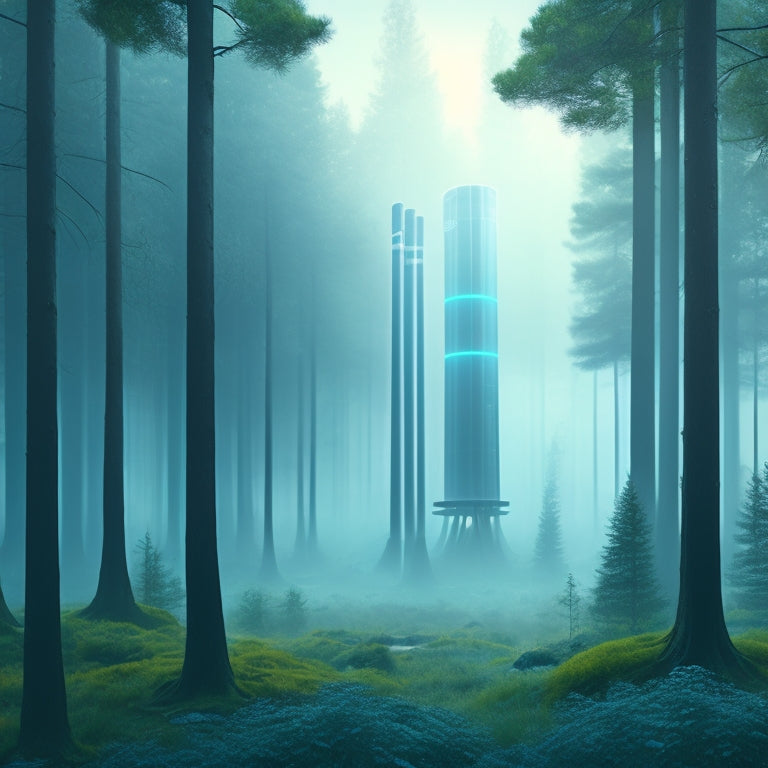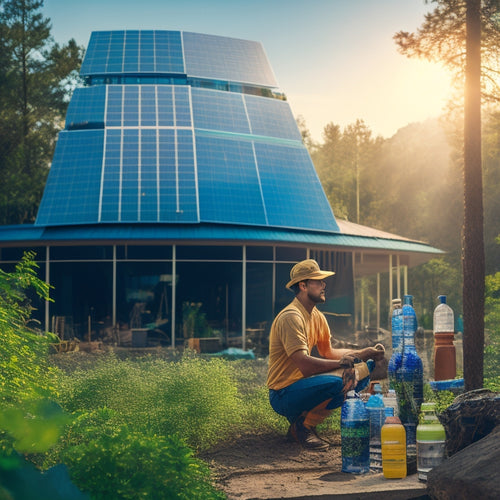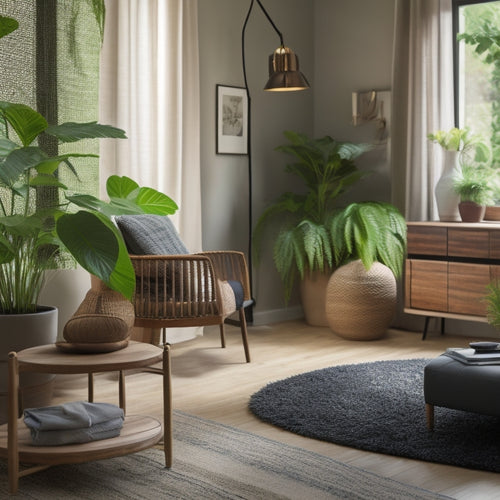
Clean Air: Guide to Green Purification Systems
Share
You're seeking a cleaner, healthier indoor environment while minimizing your ecological footprint. That's where green purification systems come in. Sustainable HVAC filters reduce environmental impact, energy consumption, and carbon emissions. Low-carbon air purification methods employ biomimetic design, natural ventilation, and renewable energy sources. Green air circulation technologies, like smart ventilation and biophilic design, optimize air exchange rates. Energy-efficient purification systems focus on minimizing energy waste, while eco-friendly air quality solutions prioritize natural alternatives and daily sustainable choices. As you investigate these innovative solutions, you'll uncover even more ways to breathe easy and live green.
Key Takeaways
- Sustainable HVAC filters reduce environmental impact by minimizing energy consumption and carbon emissions using recyclable or biodegradable materials.
- Low-carbon air purification methods utilize biomimetic design, natural ventilation, and renewable energy sources to minimize ecological footprint.
- Green air circulation technologies, such as smart ventilation systems and biophilic design, optimize air exchange rates for healthier environments.
- Energy-efficient purification systems employ advanced technologies, solar power, and smart sensors to reduce carbon footprints and ensure clean air.
- Eco-friendly air quality solutions prioritize health and the planet's well-being by replacing chemical air fresheners with natural alternatives and promoting sustainable energy consumption.
Sustainable HVAC Filters Overview
Sustainable HVAC filters have become an essential component in modern green purification systems, as they greatly reduce the environmental impact of heating, ventilation, and air conditioning (HVAC) systems.
You'll find that these filters are designed to minimize energy consumption and carbon emissions, making them a crucial part of any eco-friendly building. The filter materials used in sustainable HVAC filters are typically made from recyclable or biodegradable materials, reducing waste and promoting a healthier environment.
In addition, incorporating renewable energy sources such as solar-powered energy into HVAC systems can further reduce greenhouse gas emissions and operating costs.
By using these filters, you can effectively remove indoor allergens, such as dust, pollen, and pet dander, from the air, creating a cleaner and healthier breathing space.
As you investigate green purification systems, consider the importance of sustainable HVAC filters in achieving a more environmentally friendly and healthy indoor environment.
Low-Carbon Air Purification Methods
As you investigate green purification systems, you'll find that reducing carbon emissions is a key aspect of creating a healthier indoor environment.
Low-carbon air purification methods are essential to minimize your ecological footprint. Biomimetic design, inspired by nature, can optimize airflow and reduce energy consumption.
Natural ventilation strategies, such as operable windows and solar chimneys, can also decrease reliance on mechanical systems.
By incorporating Renewable Energy Sources like solar and wind power, you can further reduce your carbon footprint.
These approaches not only reduce carbon emissions but also promote a healthier indoor air quality.
Green Air Circulation Technologies
Optimization of air circulation is essential in green purification systems, and innovative technologies are emerging to revolutionize this aspect of indoor air quality. You can now breathe easier with smart ventilation systems that employ advanced sensors and algorithms to optimize air exchange rates, reducing energy consumption and improving indoor air quality. Biophilic design principles are also being integrated into green air circulation technologies, incorporating natural elements like plants and sunlight to create a healthier indoor environment.
| Technology | Description |
|---|---|
| Smart Ventilation | Optimizes air exchange rates using sensors and algorithms |
| Biophilic Design | Incorporates natural elements like plants and sunlight |
| Airside Economization | Employs outside air for cooling and ventilation |
| Demand-Controlled Ventilation | Adjusts ventilation rates based on occupancy and air quality |
| Natural Ventilation | Utilizes wind and buoyancy to circulate air |
Energy-Efficient Purification Systems
With the rise of green purification systems, you're likely to find that energy efficiency has become a top priority. This shift is driven by the need to reduce carbon footprints and minimize environmental impact.
Energy-efficient purification systems employ advanced technologies to optimize performance while minimizing energy consumption. As solar-powered EV charging infrastructure becomes more widespread, it's crucial to reflect on the role of renewable energy in supporting sustainable initiatives.
Smart sensors, for instance, continuously monitor air quality and adjust the system's performance accordingly. This real-time air monitoring enables the system to operate at peak efficiency, ensuring clean air while reducing energy waste.
Eco-Friendly Air Quality Solutions
Eco-friendly air quality solutions have revolutionized the way we approach indoor air pollution, allowing you to breathe easier while minimizing environmental harm. These innovative solutions prioritize your health and the planet's well-being.
You can ditch harsh chemical-laden air fresheners for natural air fresheners, like essential oils, that not only purify the air but also uplift your mood. Incorporating solar power integration into your daily life can also contribute to a sustainable energy consumption model.
Additionally, with the increasing adoption of renewable energy sources, it's crucial to evaluate the impact of our daily choices on the environment. Indoor plants are another effective eco-friendly solution, providing numerous benefits such as air purification, stress reduction, and aesthetic appeal.
Frequently Asked Questions
Can I Install a Green Air Purification System Myself?
You can attempt a DIY installation, but it's essential to weigh the benefits of professional installation against potential risks and time-consuming trial-and-error, ensuring ideal performance and safety in your green air purification system.
How Often Should I Replace My Air Purification System's Filters?
You'll need to replace your air purification system's filters every 3-6 months, depending on usage and filter lifespan; follow maintenance tips like cleaning pre-filters and monitoring airflow to optimize performance and extend filter life.
Are Green Air Purification Systems More Expensive Than Traditional Ones?
You're about to uncover a hidden gem: green air purification systems may seem like a pricey luxury, but they're a sound investment, offering a cost comparison that yields long-term savings, making them a refreshing change for your wallet.
Can I Use a Green Air Purification System in a Small Apartment?
You can easily install a green air purification system in your small apartment, thanks to compact designs that fit snugly in tight spaces, and energy-efficient models that won't break the bank or compromise your independence.
Do Green Air Purification Systems Also Remove Odors and Gases?
You're wondering if these systems are just for particles, but wait, there's more! Yes, many green air purification systems also tackle odor removal and gas absorption, leaving your air fresh and clean, just like you want it.
Related Posts
-

Why Choose Recycled Paper for Earth-Conscious Business?
By choosing recycled paper, you'll greatly reduce your business's environmental impact. You'll lower your carbon foot...
-

What Tax Deductions Apply to Sustainable Building Materials?
You can claim various tax deductions for sustainable building materials, thanks to over 40 federal tax incentives sup...
-

10 Eco-Friendly Air Management Tools for Clean Home Living
You're taking an essential step towards creating a healthier living space by seeking eco-friendly air management tool...


